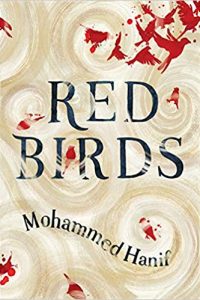Gary K. Wolfe reviews Daryl Gregory
Harrison Squared, Daryl Gregory (Tor 9780765376954, $25.99, 320pp, hc) March 2015.
 Since I’ve already mentioned Daryl Gregory as a writer of unannounced left turns, it’s very helpful of him to provide me with evidence. In last year’s We Are All Completely Fine, Gregory introduced us to a therapy group of trauma survivors, one of whom was Harrison Harrison, whose real-life experience in the Lovecraftian town of Dunnsmouth had led to a series of YA novels about a boy detective/monster hunter. In some ways, that short novel read like a sketchbook of ideas for horror stories, and his new novel, Harrison Squared, is basically one of those YA novels. It’s a lot of fun, and Gregory is shrewd enough to pepper it with allusions that offer something for everyone from young readers (the setup of going to a new high school where everyone is weird is basic R.L. Stine), to horror fans (research buoys named after famous horror writers), to more literary types who’ll enjoy allusions to everything from Coleridge and Melville to Auntie Mame. The main template, though, is Lovecraft, and particularly ‘‘The Shadow Over Innsmouth’’, although Lovecraft fundamentalists might take exception to the light-hearted liberties Gregory takes with the mythos. One of the fish-people, for example, turns out to be a teen with a passion for comic books, and when something called the Toadmother erupts from a subterranean pool, she’s more Ursula the Sea-Witch than shoggoth: ‘‘scarlet lipstick, pink eye shadow, a smear of blush on each cheek like a rash.’’ Even the ghosts and monsters here are more cranky and petulant than terrifying.
Since I’ve already mentioned Daryl Gregory as a writer of unannounced left turns, it’s very helpful of him to provide me with evidence. In last year’s We Are All Completely Fine, Gregory introduced us to a therapy group of trauma survivors, one of whom was Harrison Harrison, whose real-life experience in the Lovecraftian town of Dunnsmouth had led to a series of YA novels about a boy detective/monster hunter. In some ways, that short novel read like a sketchbook of ideas for horror stories, and his new novel, Harrison Squared, is basically one of those YA novels. It’s a lot of fun, and Gregory is shrewd enough to pepper it with allusions that offer something for everyone from young readers (the setup of going to a new high school where everyone is weird is basic R.L. Stine), to horror fans (research buoys named after famous horror writers), to more literary types who’ll enjoy allusions to everything from Coleridge and Melville to Auntie Mame. The main template, though, is Lovecraft, and particularly ‘‘The Shadow Over Innsmouth’’, although Lovecraft fundamentalists might take exception to the light-hearted liberties Gregory takes with the mythos. One of the fish-people, for example, turns out to be a teen with a passion for comic books, and when something called the Toadmother erupts from a subterranean pool, she’s more Ursula the Sea-Witch than shoggoth: ‘‘scarlet lipstick, pink eye shadow, a smear of blush on each cheek like a rash.’’ Even the ghosts and monsters here are more cranky and petulant than terrifying.
As a child, Harrison lost a leg and his father in a nautical incident that he barely remembers, and now he’s accompanying his marine-biologist mother on a month-long research trip to the remote, off-the-grid New England village of Dunnsmouth, where she supposedly is seeking evidence of the colossal squid. The local high school he enrolls in turns out to be a cavernous, labyrinthine Gothic castle, where the spookily placid students communicate through an elaborate finger-code and the teachers are obsessed with the virtues of totalitarianism, reanimating dead frogs with electricity, and teaching such things as the arcana of local history and tying knots to make nets. When his mother’s research vessel disappears, Harrison’s blithely clueless New York sophisticate Aunt Sel shows up to look after him (though it later becomes apparent she has her own reasons for going off the grid). Determined to find his mom, even after the somewhat suspect local authorities have abandoned the search, Harrison manages to enlist the aid of a few classmates, including a girl named Lydia, and the aforementioned fish-boy, whom he first encounters trying to steal Harrison’s favorite comic-strip omnibus. They find themselves up against not only the eldritch cult that seems to involve all the adults in town, but such monstrous figures as the Toadmother and the terrifying Scrimshander (of whom we also got a brief preview in We Are All Completely Fine), as well as dark secrets that go back generations.
Despite some genuinely scary moments – mostly in the few chapters that shift to Harrison’s mother’s point of view – the generally good-natured tone of the tale, along with wonderful characters like Aunt Sel and the fish-boy Lub, suggest Daniel Pinkwater as much as Lovecraft, and despite the HPL furniture Harrison Squared is in no sense an imitation or pastiche. Even though it seems everyone has had a go at it, I don’t think you can really get the full Lovecraft effect without a measure of the gnarly hostility that seemed to govern his worldview, and Gregory is anything but a hostile writer. After all, if he can turn a zombie into a civil-rights leader in Raising Stony Mayhall, why shouldn’t he turn an exasperated Elder One into Jack Benny?




